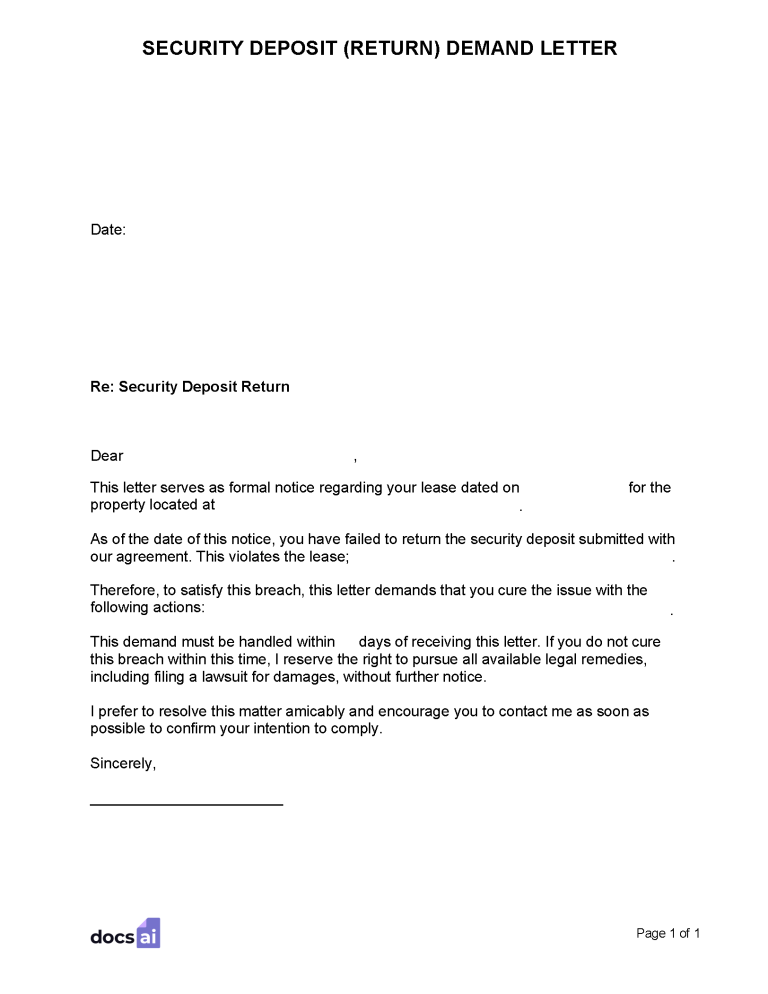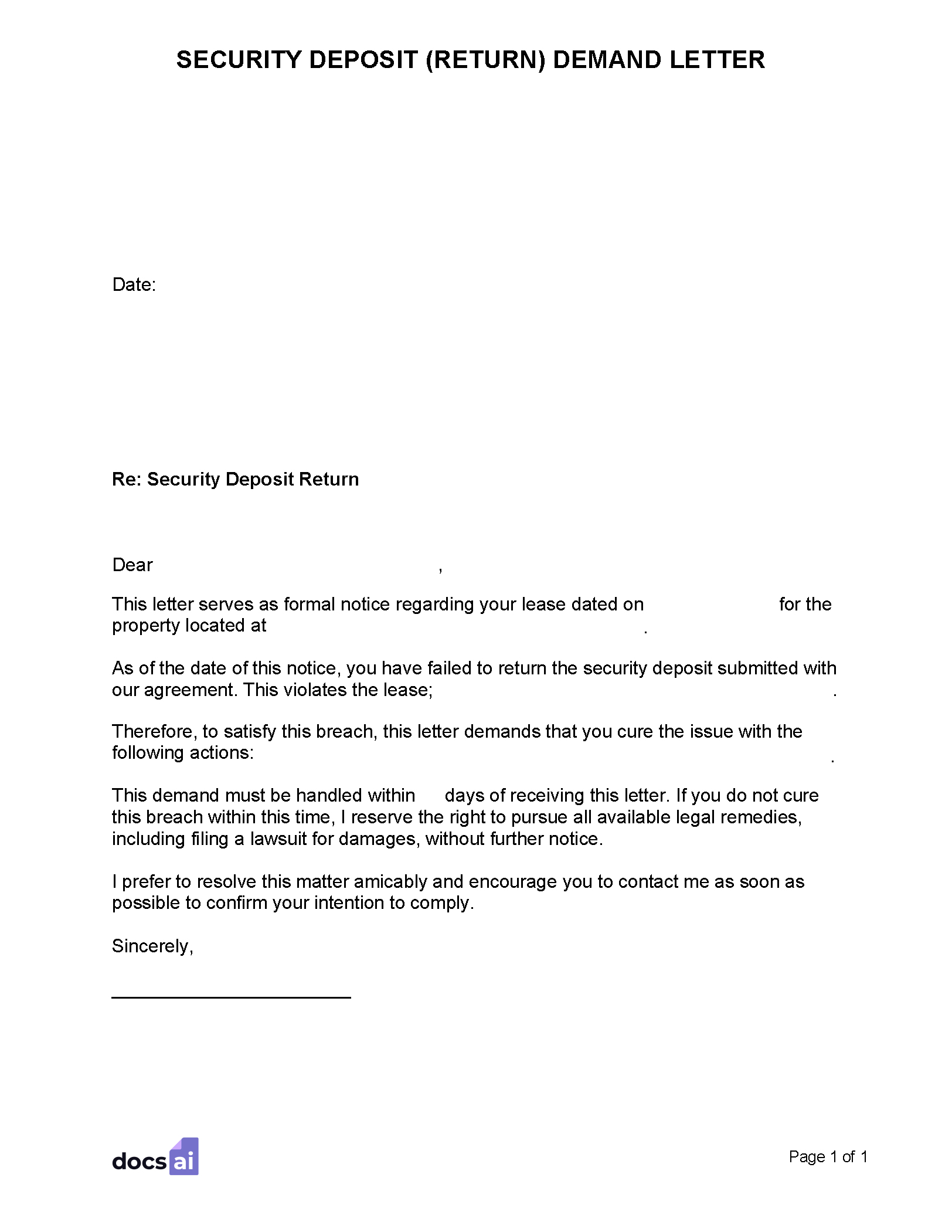Key Features
- Legally Grounded Language. Increases the likelihood of compliance from landlords who take a legal tone seriously.
- Professionally Structured Format. Promotes respect from landlords, courts, and mediators who appreciate a demand letter using direct (as well as legally compliant) language.
- Easily Customized. Edit the template according to the circumstances and the applicable laws and regulations governing the lease.
- Built-In Deadline Language. Uses pre-written phrasing to create a sense of urgency without sounding emotional, sets a deadline, and maintains a paper trail for the demand.
- Encourages Landlord Compliance. Allows for a report on the lease terms and a tenant’s legal rights to be enforced by citing possible consequences for leaving the demand unanswered.
How to Remedy (7 steps)
1. Research the Lease and State Laws
2. Prove Property Condition
3. Observe the Waiting Period
4. Draft the Demand Letter
Compose a letter stating that the security deposit must be returned. Be professional and avoid aggressive language. It should include;
- Tenant name and forwarding address
- Landlord (or property manager) name and address
- Property address as reported on the lease
- Important dates (e.g., lease, move-out)
- Deposit amount
- References to lease terms and state laws.
5. Send the Letter With Proof of Receipt
Have the demand letter delivered with proof of receipt. Generally, it is recommended to use certified mail in order to have verifiable proof of delivery.
6. Allow Time to Respond
You must also follow the instructions in the demand letter’s deadline. Thus, wait until the deadline for response elapses before contacting them.
7. Take Legal Action When Needed
If the landlord has refused and is unable to show a reason for the denial, then consider taking them to small claims court. If this is necessary, then make sure you can show;
- Demand letter
- Lease
- Move-out photos
- Mail receipts for the letter.
Sample
SECURITY DEPOSIT (RETURN) DEMAND LETTER
[TENANT’S NAME]
[TENANT’S STREET ADDRESS]
[TENANT’S CITY, STATE, ZIP CODE]
[TENANT’S PHONE NUMBER]
[TENANT’S E-MAIL]
Date: [DATE]
[LANDLORD’S NAME]
[LANDLORD’S STREET ADDRESS]
[LANDLORD’S CITY, STATE, ZIP CODE]
[LANDLORD’S E-MAIL]
Re: Security Deposit Return
Dear [LANDLORD’S NAME],
This letter serves as formal notice regarding your lease dated on [LEASE’S EFFECTIVE DATE] for the property located at [LEASED PROPERTY ADDRESS].
As of the date of this notice, you have failed to return the security deposit submitted with our agreement. This violates the lease; [DESCRIBE LEASE TERMS AND BREACH].
Therefore, to satisfy this breach, this letter demands that you cure the issue with the following actions: [DESCRIBE HOW TO CURE].
This demand must be handled within [#] days of receiving this letter. If you do not cure this breach within this time, I reserve the right to pursue all available legal remedies, including filing a lawsuit for damages, without further notice.
I prefer to resolve this matter amicably and encourage you to contact me as soon as possible to confirm your intention to comply.
Sincerely,
_______________________
-
Yes, a well-written, legally compliant letter strengthens your legal case since it shows you tried to resolve the matter in good faith.
-
Yes, the letter is customizable so that you can attach evidence such as photos taken during the move-out.
-
Yes, send it once the deadline for the security deposit return has passed according to state law.
-
Yes, consult state law when editing this letter to include specific state laws applicable to your lease and the situation.
-
Yes, many tenants see responses to such letters within a week since a professional tone often motivates landlords to avoid court action.


